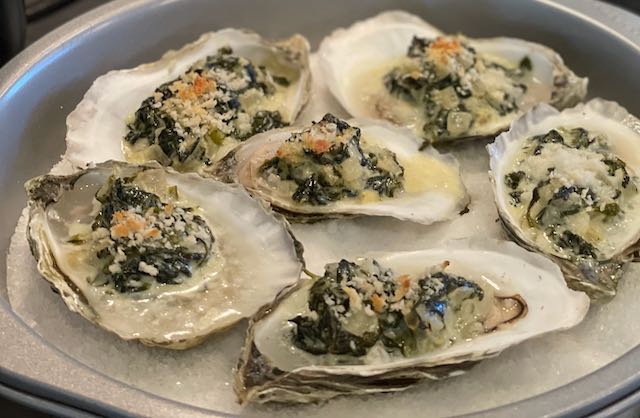Click here to listen to Just Black Talking Podcast!
It’s been over 2 months now and as Americans, we still can’t travel out of the country! Technically we can but there’s the quarantine in most places and I don’t know about you, but I don’t have that kind of vacation time from work to waste 2 weeks on lockdown in some Howard-Johnson in Italy. So, no sandy beaches, no romantic strolls through quiet little streets in faraway towns. No selfies with just the perfect jealousy-inducing peek at some iconic structure or beautiful water that lets everyone know that you’re having a better day than they are. (Because that is why all of you are taking those pictures isn’t it?) Well, despite all of that, I’m inviting you to travel with me. How? Hear me out. Each time we eat, listen to music, or even put on clothing, we have a chance to explore the origins, culture, and history involved with whatever we are enjoying at that moment. So let us talk about something intriguing, from someplace beautiful. One of the world’s most intriguing cities, and one of the world’s best culinary treats. Let’s talk about Canelé de Bordeaux, the curious-looking, fanciful, and delicious official cake of the city of Bordeaux France. Perhaps it’s one of your favorite pastries, or maybe this is your first time hearing about it. We will talk about its controversial history, traditional status, and recent resurgence. So pack your bags! Canelé de Bordeaux, let’s go!
Bordeaux is located near the Atlantic coast of southwestern France, approximately 310 miles southwest of Paris. The population of the Bordeaux metropolitan region ranks as the 5th largest in France, with the Bordeaux city center consisting of approximately 250,000 residents, the 9th most populous city. Being France’s most prominent wine region, the region is known for its fine wines, lovely vineyards, and stunning architecture. The historic part of the city is recognized on the UNESCO World Heritage Site list. Only Paris has more preserved historical buildings than Bordeaux.





The origin of the canelé, (a.k.a. canelé de Bordeaux, cannelé Bordelais) has become enrobed in a type of culinary folklore. Controversial tales vary, including one anecdote that the canelé originated from the Couvent des Annonciades, a 16th-century convent in Bordeaux. Legend has it that nuns made cakes, using the donated egg yolks from local winemakers. Winemaking involves a clarification process called fining which uses only egg whites, thus the surplus of yolks available for the nuns. Unfortunately during the French Revolution, any records or evidence to verify this legend were lost. Alternatively, it’s proposed that residents of Bordeaux living nearby to the loading docks, gathered spilled flour and used it to make cakes for poor children after baking the treats in small fluted copper or brass molds.
In the nearby city and region of Limoges, there was a food called canole, a bread made with flour and eggs. It is believed that this food began being sold in Bordeaux under the name of canaule (canaulé, canaulet). Artisans who specialized in baking them were known as canauliers and registered a Corporation with the Parliament of Bordeaux in 1663. However, another Pastry Corporation had a monopoly over baking with mixtionnée dough, which included milk and sugar. Thus the canauliers were prohibited from using those ingredients. An official dispute ensued and ultimately in March 1755, a decree to the council of State in Versailles ended this monopoly, granting permission to canauliers to use mixtionée dough. Over the years, canauliers disappeared from the list of Bordeaux craftsmen, not again reemerging until the early 20th century.
In 1985 a group of pâtissiers gathered and with the purpose of protecting the traditional recipe of their canelés, they created the Confrérie du Canelé de Bordeaux. In addition to specifying details such as the correct mold, sizing and secret ingredients, to further distinguish their product they registered the appellation canelé as a collective mark, removing on of the “n”s from the name to assert its identity. Canelé de Bordeaux is the official name as registered at the National Institute of Industrial Property, while cannelé bordelais is used everywhere else.

A canelé is a symphony of contrast. The exterior crust is thin, dark brown, nearly black in color, with a light crackling crunch. The aroma of dark caramel is accompanied by a subtle bittersweet taste, gently sweetened by the use of beeswax to line the copper molds. Bakers vary on the amount if any, of beeswax either as a blend with butter, in place of butter, or sometimes no beeswax at all. Supporters argue that the beeswax provides a luster to the finished product, adds to the final crisp shell, and even extend the shelf life. Detractors contend that it’s not worth the added effort as it provides imperceptible benefits. The interior, brightly butter-colored, textured with air pockets and tasting gently of vanilla and rum-flavored custard.

To achieve these results, artisans adjust ingredients and handling of their batter. Mostly everyone agrees that the ingredients consist of flour, sugar, milk, eggs, rum, and vanilla. But that’s about the only thing universally agreed upon. There is debate whether resting the batter overnight for 24 hours is sufficient, or if 48 hours or even longer is required. Next, how long to bake, from 1-2 hours which can vary depending on temperature, oven, and desired darkness. A hardline break from artisanal connoisseurs is the mold material used Traditionalists insist on copper, whilst cost and practicality lead others to more economical silicone molds. If you find yourself around suspected aficionados do yourself a favor and avoid the silicone.
The general recipe calls for the cold batter to be poured into an ice-cold, tin-lined copper mold. Next, it’s baked in a hot oven for a long period of time, after which they are removed from the mold and allowed to cool. During this cooling, the exterior hardens and becomes a crisp shell. They are best enjoyed within five or six hours after cooking. Beyond that time the crisp shell begins to become chewy and spongy. Remember that this is an artisanal product. Differences in ingredients, technique, and desired results add to the variety of final products you may encounter. Some bakers intentionally vary the darkness so that customers can choose the level of caramelization they prefer. As such, there are expected variations, even in the birthplace of Bordeaux, from baker to baker.

At 2 inches tall, this is typically a two-bite endeavor. But the reward, a delightfully balanced savory and sweet out of hand treat, is well worth the effort. Great to enjoy with your favorite coffee, espresso, tea, wine, or even on its own, canelé de Bordeaux/cannelé bordelais should be on your short list of destination culinary experiences.






